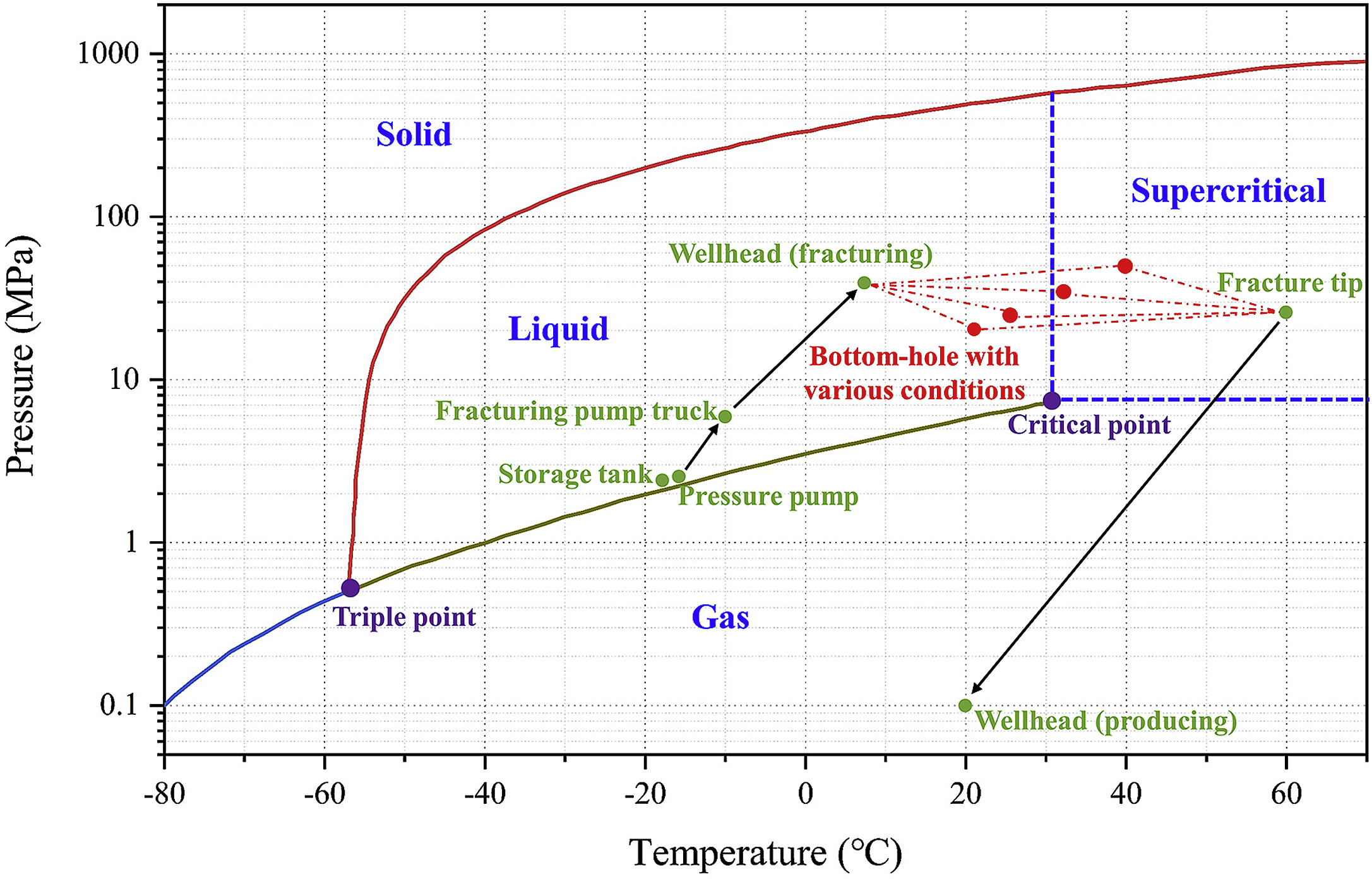JRMGE / Vol 15 / Issue 7
Numerical simulations of supercritical carbon dioxide fracturing: A review
Lin Wu, Zhengmeng Hou, Zhifeng Luo, Ying Xiong, Nanlin Zhang, Jiashun Luo, Yanli Fang, Qianjun Chen, Xuning Wu
Show More
a Institute of Subsurface Energy Systems, Clausthal University of Technology, Clausthal-Zellerfeld, 38678, Germany
b State Key Laboratory of Oil and Gas Reservoir Geology and Exploitation, Southwest Petroleum University, Chengdu, 610500, China
2023, 15(7): 1895-1910. doi:10.1016/j.jrmge.2022.08.008
Received: 2022-03-28 / Revised: 2022-06-09 / Accepted: 2022-08-14 / Available online: 2022-09-28
2023, 15(7): 1895-1910.
doi:10.1016/j.jrmge.2022.08.008
Received: 2022-03-28
Revised: 2022-06-09
Accepted: 2022-08-14
Available online: 2022-09-28
As an emerging waterless fracturing technology, supercritical carbon dioxide (SC-CO2) fracturing can reduce reservoir damage and dependence on water resources, and can also promote the reservoir stimulation and geological storage of carbon dioxide (CO2). It is vital to figure out the laws in SC-CO2 fracturing for the large-scale field implementation of this technology. This paper reviews the numerical simulations of wellbore flow and heat transfer, fracture initiation and propagation, and proppant transport in SC-CO2 fracturing, including the numerical approaches and the obtained findings. It shows that the variations of wellbore temperature and pressure are complex and strongly transient. The wellhead pressure can be reduced by tubing and annulus co-injection or adding drag reducers into the fracturing fluid. Increasing the temperature of CO2 with wellhead heating can promote CO2 to reach the well bottom in the supercritical state. Compared with hydraulic fracturing, SC-CO2 fracturing has a lower fracture initiation pressure and can form a more complex fracture network, but the fracture width is narrower. The technology of SC-CO2 fracturing followed by thickened SC-CO2 fracturing, which combines with high injection rates and ultra-light proppants, can improve the placement effect of proppants while improving the complexity and width of fractures. The follow-up research is required to get a deeper insight into the SC-CO2 fracturing mechanisms and develop cost-effective drag reducers, thickeners, and ultra-light proppants. This paper can guide further research and promote the field application of SC-CO2 fracturing technology.
Keywords: Wellbore, Fracturing, Proppant transport, Supercritical carbon dioxide, Fracture initiation and propagation
Show Figure(s)
Supplementary Material
Share and Cite
Lin Wu, Zhengmeng Hou, Zhifeng Luo, Ying Xiong, Nanlin Zhang, Jiashun Luo, Yanli Fang, Qianjun Chen, Xuning Wu, 2023. Numerical simulations of supercritical carbon dioxide fracturing: A review. J. Rock Mech. Geotech. Eng. 15 (7), 1895-1910.
Article Data
Author(s) Information
Zhengmeng Hou

Prof. Zhengmeng Hou is the head of rock mechanics at Clausthal University of Technology as well as an academician of the Academy of Geosciences and Geotechnologies, Germany. He has been mainly engaged in teaching, scientific research and international cooperation in the fields of unconventional petroleum and geothermal development, hydraulic fracturing, carbon capture utilization and storage, carbon neutrality and energy transition, underground storage of natural gas and strategic oil, especially renewable energy coupled with power-to-X, as well as deep rock mechanics. He has published more than 250 papers included in SCI/EI, 10 monographs in English and German and 1 monograph in Chinese, and edited 5 international conference proceedings.

